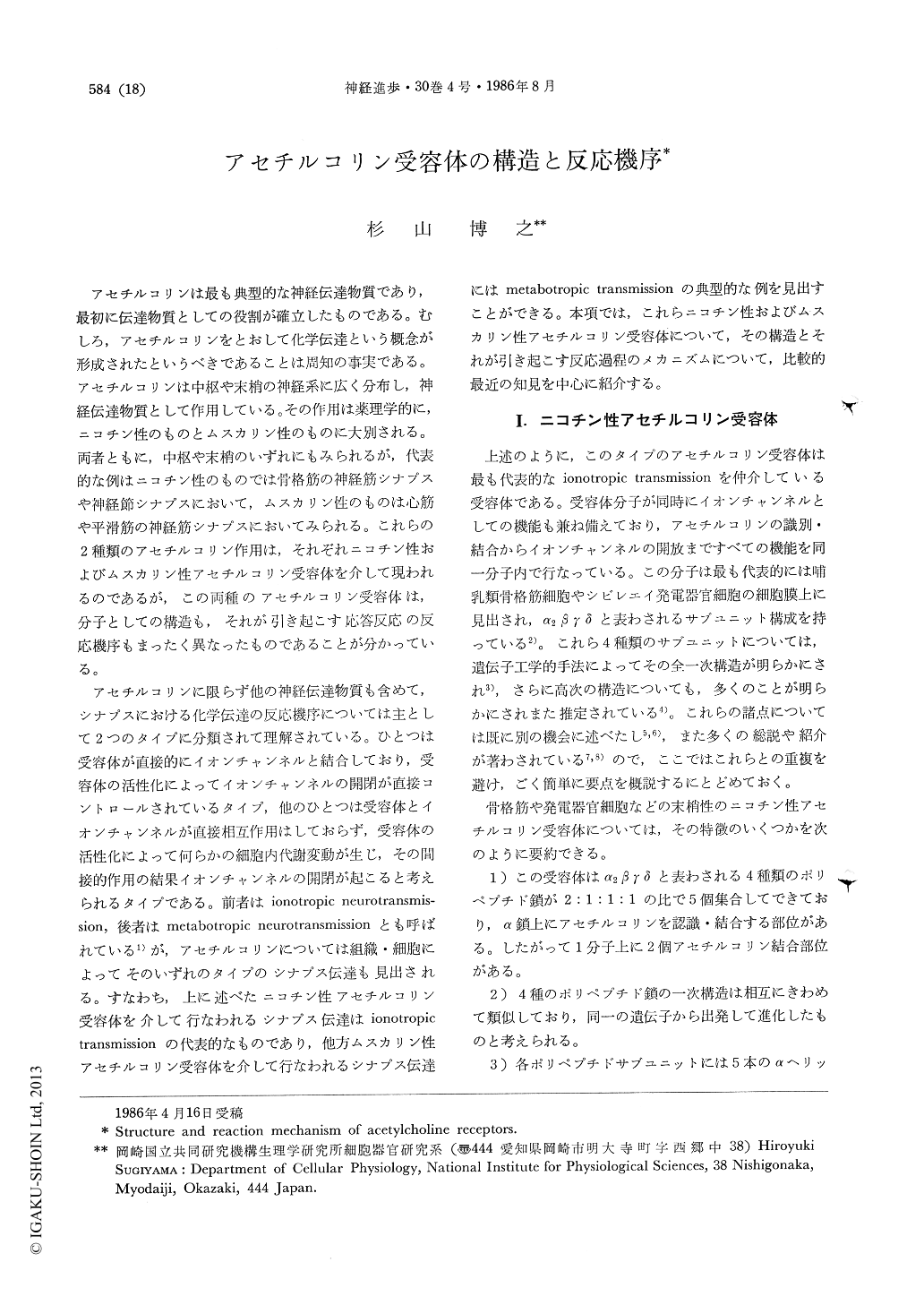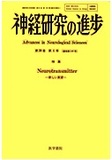Japanese
English
- 有料閲覧
- Abstract 文献概要
- 1ページ目 Look Inside
アセチルコリンは最も典型的な神経伝達物質であり,最初に伝達物質としての役割が確立したものである。むしろ,アセチルコリンをとおして化学伝達という概念が形成されたというべきであることは周知の事実である。アセチルコリンは中枢や末梢の神経系に広く分布し,神経伝達物質として作用している。その作用は薬理学的に,ニコチン性のものとムスカリン性のものに大別される。両者ともに,中枢や末梢のいずれにもみられるが,代表的な例はニコチン性のものでは骨格筋の神経筋シナプスや神経節シナプスにおいて,ムスカリン性のものは心筋や平滑筋の神経筋シナプスにおいてみられる。これらの2種類のアセチルコリン作用は,それぞれニコチン性およびムスカリン性アセチルコリン受容体を介して現われるのであるが,この両種のアセチルコリン受容体は,分子としての構造も,それが引き起こす応答反応の反応機序もまったく異なったものであることが分かっている。
アセチルコリンに限らず他の神経伝達物質も含めて,シナプスにおける化学伝達の反応機序については主として2つのタイプに分類されて理解されている。
The structure and function of acetylcholine receptors, both nicotinic and muscarinic, were discussed. In the first part, nicotinic acetylcholine receptors were considered. The receptors from electric organs or skeletal muscles are one of the best characterized drug receptors. Recent know-ledge on this receptor was briefly summerized. In contrast to this receptor, nicotinic receptors of neuronal cells and brains are poorly understood. The reasons why neuronal nicotinic receptors are poorly understood were discussed. Several attempts to overcome the problems were reviewed.
In the second part, muscarinic acetylcholine receptors were considered. This type of receptor is much more complicated in the pattern and mechanism of responses it evokes than nicotinic acetylcholine receptor. Recent studies using differ-ent cells and tissue preparations, however, suggest that many of muscarinic responses may be me-diated by guanine nucleotide-binding regulatory protein (Ni or No). As an example, analyses of muscarinic response of Xenopus oocytes were discussed. It is proposed that the primary target of muscarinic acetylcholine receptor is Ni (or No) protein, which in turn triggers diverse effects and responses depending on cells and tissues.

Copyright © 1986, Igaku-Shoin Ltd. All rights reserved.


